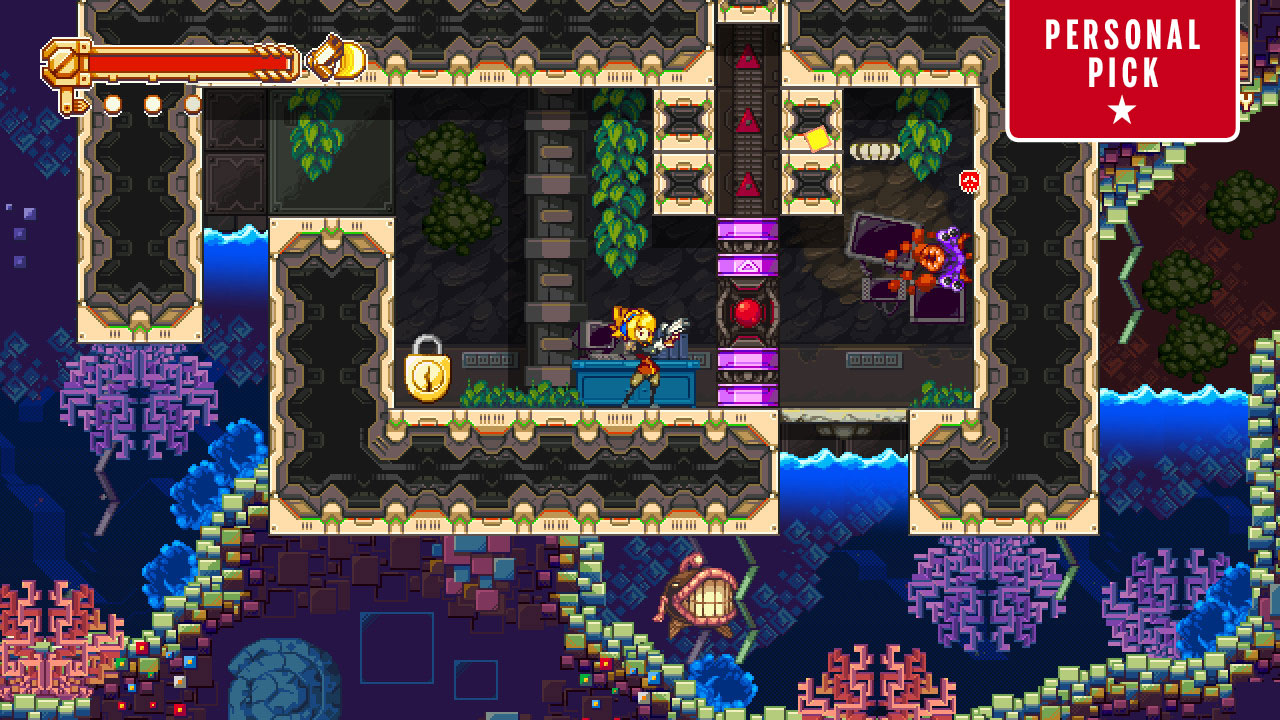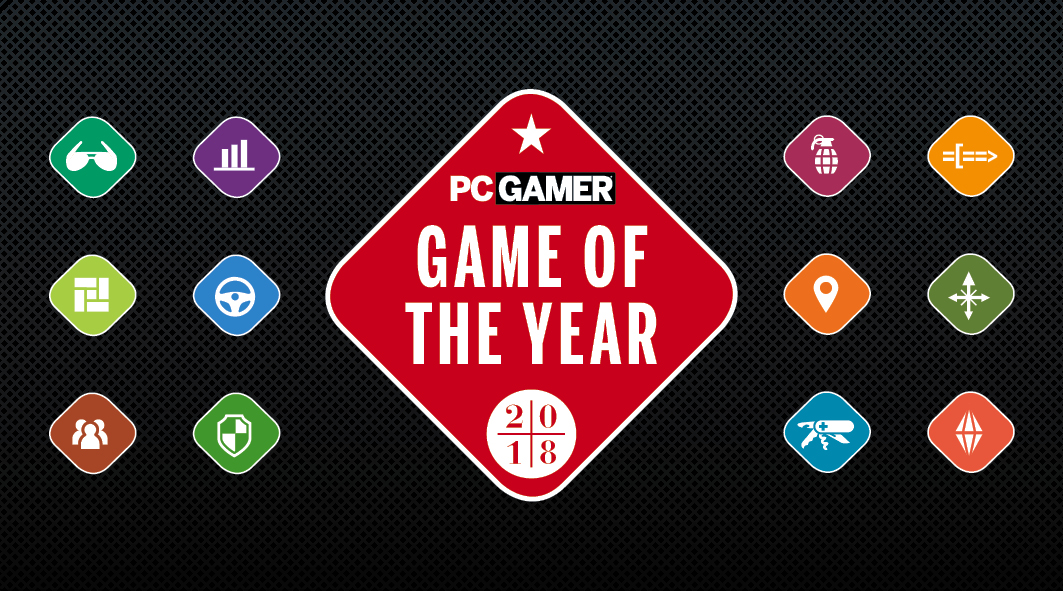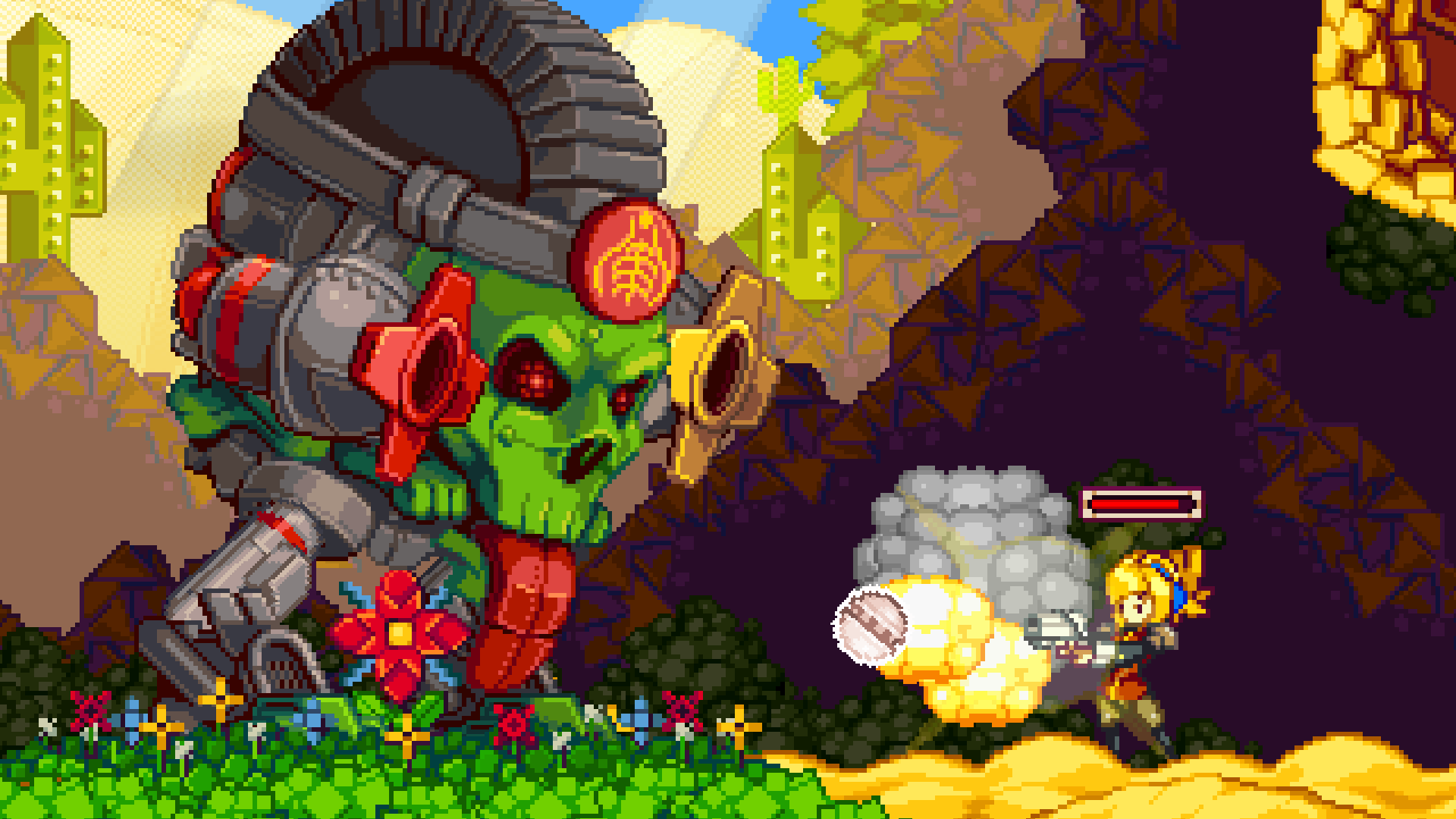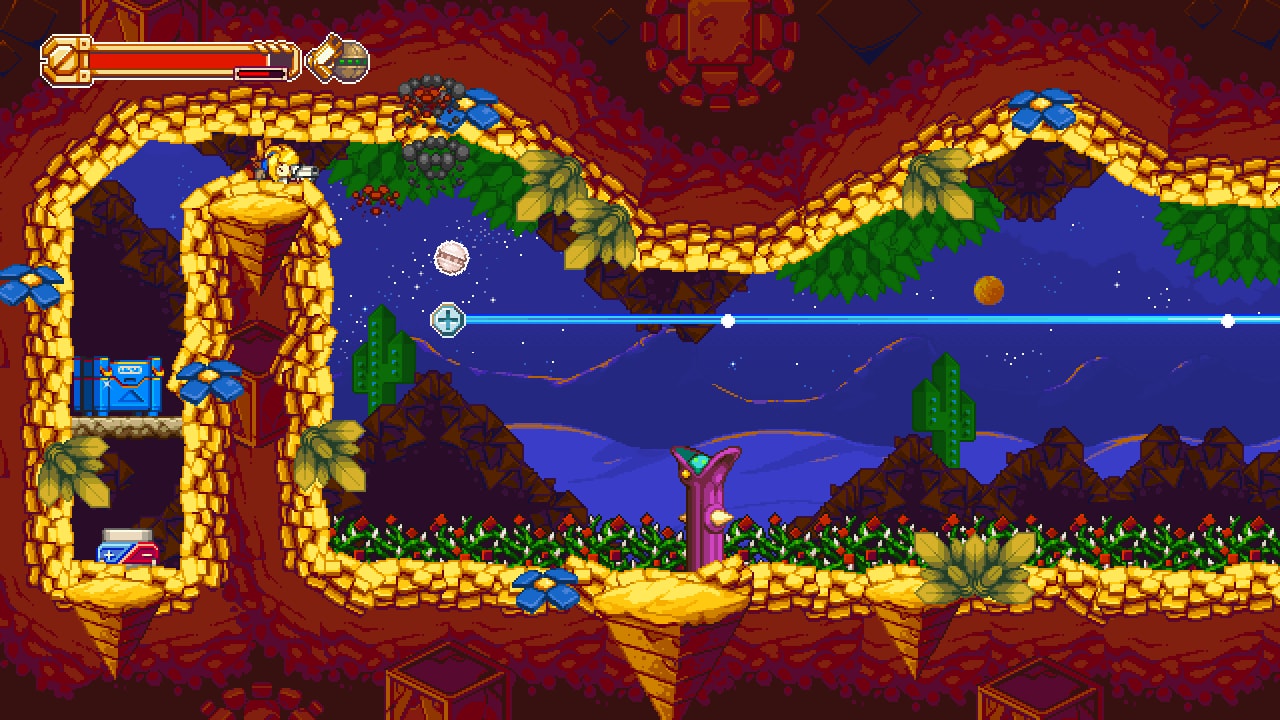Iconoclasts was the biggest and strangest 2D platformer of 2018
For all its minor faults, it delivers a surplus of charm.


Accompanying our team-selected Game of the Year awards for 2018, individual members of the PC Gamer team will each discuss one of their favorites from the last 12 months. We'll post a new personal pick alongside our awards until 2018 ends.
Droves of long-awaited, retro-styled indies released in 2018: Timespinner, Death’s Gambit, Chasm and Iconoclasts were arguably the most anticipated, and all were subject to years of close scrutiny by fans. These titles stick to a genre format that has existed for over 30 years—the Metroidvania—and none do much to challenge or surprise players, motivated as they are by nostalgia and reverence for the classics.
Nostalgia feels like a real impediment in the modern evolution of 2D adventure games—there’s no reason why the genre can’t continue to evolve. For people who only play 2D platformers (I’m sure there are plenty, and I respect them), Steam probably has several lifetimes' worth of entertainment in its inventory just for them. This year really felt like a turning point for the indie platformer, though: after Hollow Knight and Celeste, things have changed. It's harder than ever to just tread water when it comes to platformers. You have to make something special.

But if there’s a game I’ve played this year, nay this decade, which immaculately re-constructs not so much the visual style but the spirit of the '90s, then it’s probably Iconoclasts. This isn’t a radical game, it’s a formally conservative one. But it’s goddamned beautiful, and the fact that it was created by a single person—Joakim Sandberg—lends it an intimacy and urgency that’s lacking from so many other titles that just dutifully tick the boxes.
I, uh, don’t really know what the game’s about. The story is intensely convoluted and that’s because it’s written by one person. I love that it’s intensely convoluted, even while I couldn’t be bothered to parse it. I know that Robin is the protagonist: she’s a mechanic, and one of her main problem-solving tools is a wrench. This plays into the game’s light physics-based puzzle play: her wrench can be used as a grappling hook, a weapon, and—wait for it—a tool for turning bolts. For whatever reason, Robin comes to blows with the powerful ruling organisation “One Concern”, and the game mostly follows her efforts to escape or thwart it.

Many have pointed out that the Iconoclasts has an absurdly convoluted plot, but if you’re like me and play 2D platformers for the pleasure of inhabiting their worlds and jumping between platforms, a moment spent gazing at Sandberg’s lushly detailed pixel-art will make any other concern redundant. This is, without a doubt, the most lavish 2D sidescroller I’ve ever seen, and every effort has been made to imbue it with charm and personality. The opening world—blue skies, green fields, comforting tunes—is strewn with cubes and triangles representing stone, foliage and grass. But just over there lay the remains of a brick wall, and further afield are metallic-looking pillars supporting hieroglyph-ed piping. What kind of world have we entered here? Why do all these disparate elements look so coherent, so painterly?
Later, Sandberg creates familiar-feeling hi-tech factory settings, but does so with water and foliage and a slightly jarring purple-themed aesthetic. What’s interesting about the world of Iconoclasts is that from moment-to-moment the environments feel familiar, but upon close observation they’re quite weird, slightly askew, bizarrely unwilling to settle on either “fantasy” or “sci-fi” (games must, you know!).
It’s a fun game, too, albeit with glaring imperfections—it was made by one guy, after all. There’s one particular boss battle against an invisible character that will probably go down as one of my least favourite gaming moments in 2018. I know it sounds like I’m making excuses for this game that I dearly love, but even this big pain in the arse boss is charming. Overall, Iconoclasts feels like a huge unwieldy work of passion by an artist just kinda figuring it out as they go. In an age when shortcomings in games are often interpreted as conspiratorial, "lazy", possibly sinister, I like that Iconoclasts very occasionally just sucks in an old-fashioned game sort of way: sometimes its ideas just aren't fun.
The biggest gaming news, reviews and hardware deals
Keep up to date with the most important stories and the best deals, as picked by the PC Gamer team.
Iconoclasts came out in the same week as Celeste, and the latter game was definitely both a critical darling and a fan favourite. But it also felt too honed, its themes felt too didactic. Iconoclasts is the kind of game I want to play most: big, personal, hubristic, ambitious, inscrutable, and with lots of heart. It was eight years in development, and that shows in both its strengths and weaknesses.

Shaun Prescott is the Australian editor of PC Gamer. With over ten years experience covering the games industry, his work has appeared on GamesRadar+, TechRadar, The Guardian, PLAY Magazine, the Sydney Morning Herald, and more. Specific interests include indie games, obscure Metroidvanias, speedrunning, experimental games and FPSs. He thinks Lulu by Metallica and Lou Reed is an all-time classic that will receive its due critical reappraisal one day.

